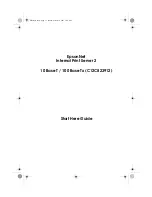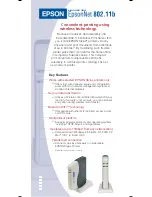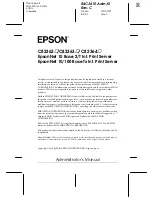
L-INX User Manual
87
LOYTEC
Version 4.0
LOYTEC electronics GmbH
exposed to the OPC server. By default, all system registers are checked for being exposed to
OPC. To reduce the number of needed OPC tags, you may deselect certain system registers,
which are not useful in a specific project.
System register can also serve as a testing setup for the OPC XML-DA communication
without a network data point configuration. The
System Time
register is updated every
second and may serve for testing subscriptions. The
Authentication Code
register can be
used to verify writing to OPC tags.
5.1.9 User Registers
The device can be configured to contain user registers. In contrast to system registers, these
are only available as a part of the data point configuration. User registers are data points on
the device that do not have a specific technological representation on the control network.
Thus, they are not accessible over a specific control network technology.
A register merely serves as a container for intermediate data (e.g., results of math objects,
calculation parameters). The register can have the following, basic data types:
Double
: A register of base type
double
is represented by an
analog
data point. It can
hold any scalar value. No specific scaling factors apply.
Signed Integer
: A register of base type
signed integer
is represented by a
multi-state
data point. This register can hold a set of discrete states, each identified by a signed
stats ID.
Boolean
: A register of base type
Boolean
is represented by a
binary
data point. This
register can hold a Boolean value.
String
: A register of base type
string
is represented by a
string
data point. This register
can hold a variable-length character string in UTF-8 format.
Variant
: A register of base type
variant
is represented by a
user
data point. This
register can hold any user-defined data of up to a specified length of Bytes. This length
is defined when creating the register and cannot be changed at run time.
Since a register has no network direction, it can be written and read. Therefore, two data
points are generated for each register, one for writing the register (output) and one for
reading the register (input). A suffix is added to the register name to identify the respective
data point. For example, the register
MyValue
will have two data points generated for:
MyValue_Read
and
MyValue_Write
.
5.1.10 Math Objects
Math objects are advanced application objects that can execute mathematical operations on
data points. A math object takes a number of input data points (variables
v
1
,
v
2
, …,
v
n
) and
calculates a result value according to a specified formula. The result is written to a set of
output data points. The formula is calculated each time one of the input data points updated
its value. The formula is only evaluated if all of the input data points have a valid value (i.e.,
don‘t show the
invalid value
status).
5.2 Connections
With the use of connections data points can interact with each other. Connections specify
which data points exchange values with each other. Both types of connections - ―1:
n
‖ and
―
m
:1‖ connections – are supported. The single data point is referred to as the
hub
data
point, whereas the other data points are the
target
data points.
This means, the following connections are possible:
1 input data point is connected to
n
output data points,
















































